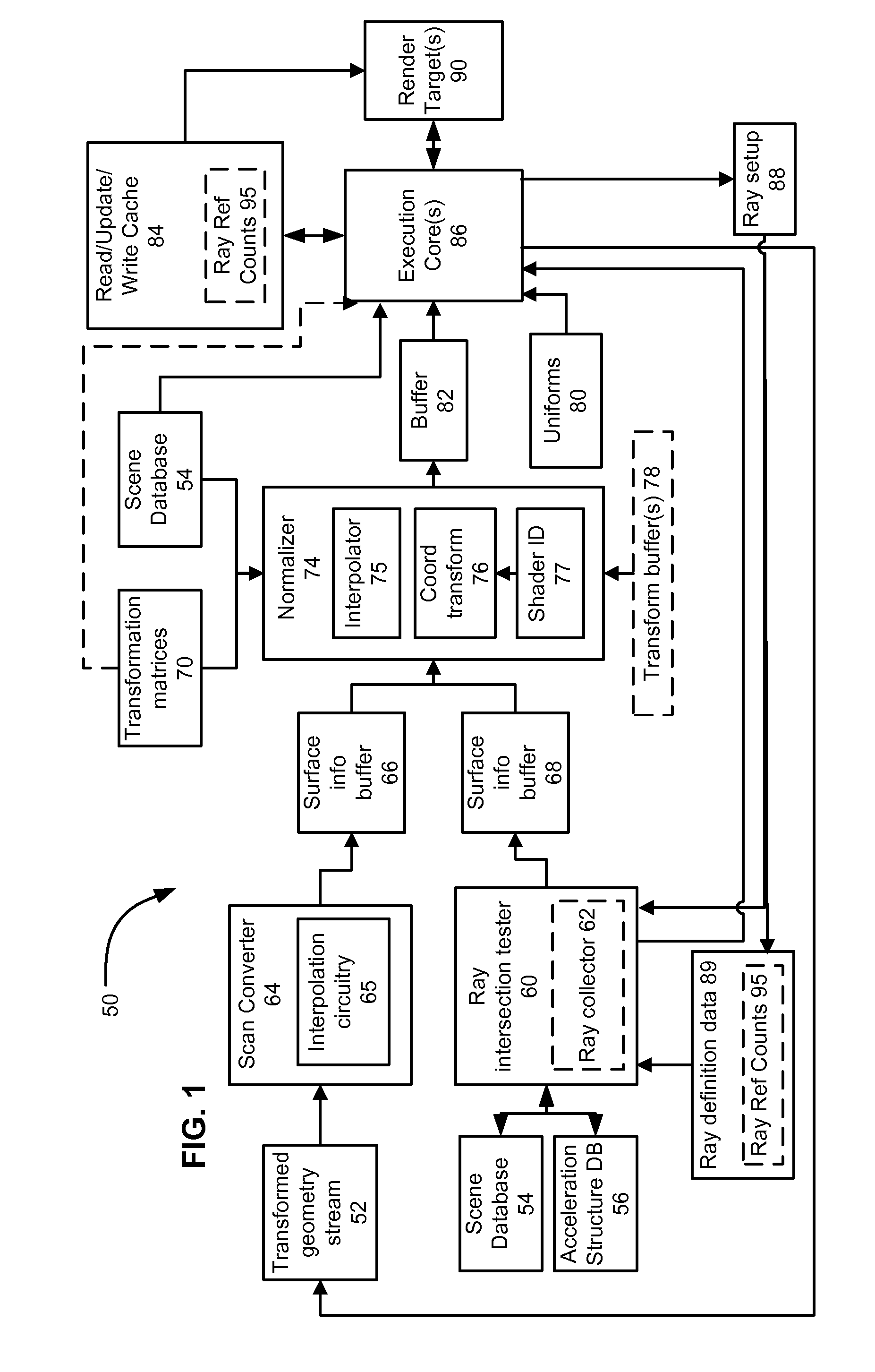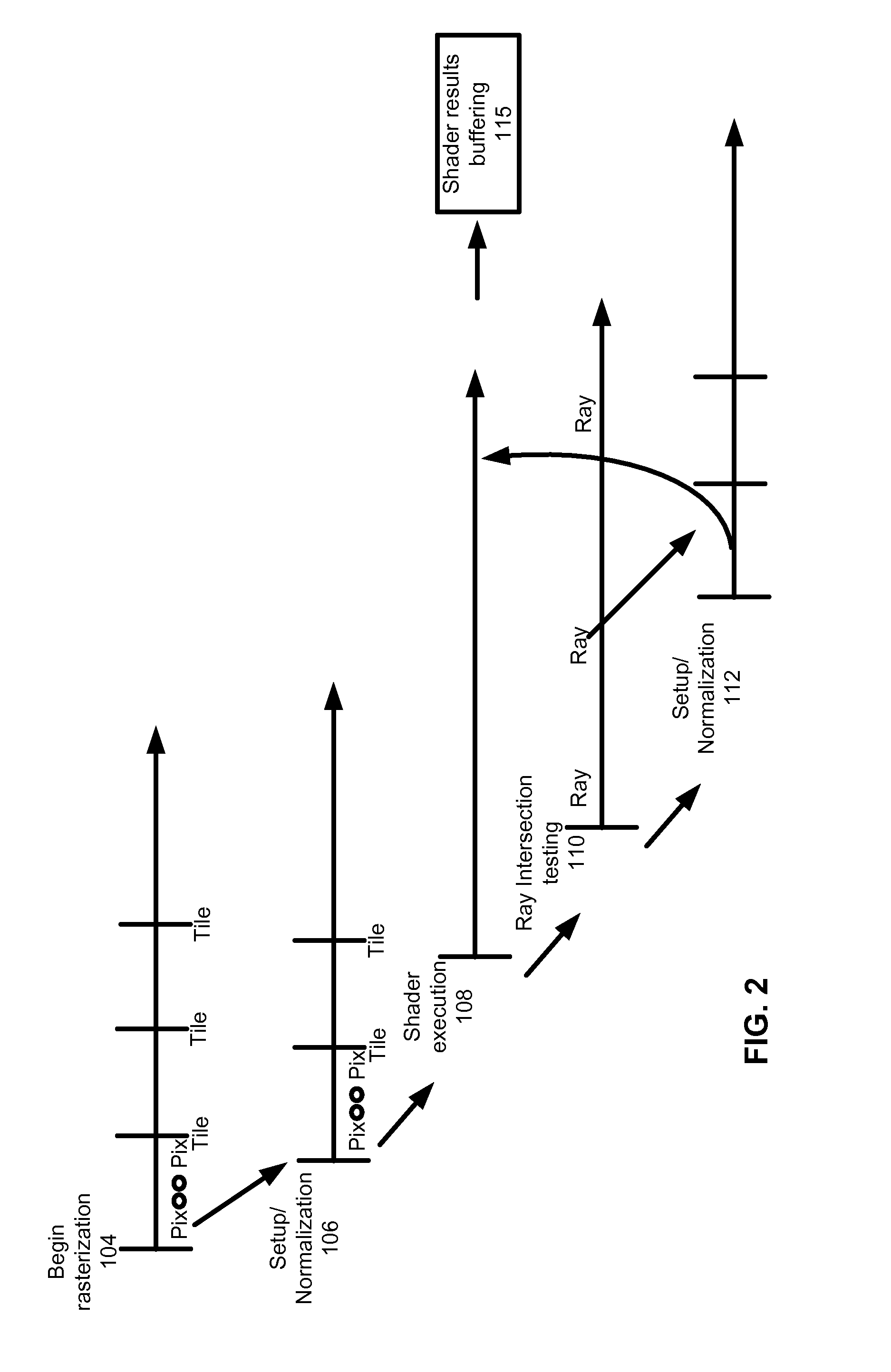Unified rasterization and ray tracing rendering environments
a ray tracing and rasterization technology, applied in the field of 3d rendering, can solve the problems of ray tracing not being pipelined in the same way as rasterization, and it is difficult and time-consuming to produce sophisticated rendering outputs using rasterization
- Summary
- Abstract
- Description
- Claims
- Application Information
AI Technical Summary
Benefits of technology
Problems solved by technology
Method used
Image
Examples
Embodiment Construction
[0027]The following disclosure includes multiple examples of graphics processing architectures, in which a unified computation resource performs shading work concurrently for surfaces identified by both ray tracing and by rasterization techniques. In one aspect, a unified computation resource executes shaders based on a normalized set of inputs, and a given surface is shaded by an associated shader module, regardless whether that surface is to be shaded responsive to a ray intersection or during rasterization. In another aspect, different shader code modules may exist for shading ray tracing intersections and for rasterization. In implementations according to such aspects, surface shaders for rasterization offer a capability to emit rays to be intersection tested, and to perform shading, in dependence on the results of intersection testing that ray.
[0028]In some implementations of the disclosure, there are multiple concurrently executing processes that either have dedicated hardware...
PUM
 Login to View More
Login to View More Abstract
Description
Claims
Application Information
 Login to View More
Login to View More - R&D
- Intellectual Property
- Life Sciences
- Materials
- Tech Scout
- Unparalleled Data Quality
- Higher Quality Content
- 60% Fewer Hallucinations
Browse by: Latest US Patents, China's latest patents, Technical Efficacy Thesaurus, Application Domain, Technology Topic, Popular Technical Reports.
© 2025 PatSnap. All rights reserved.Legal|Privacy policy|Modern Slavery Act Transparency Statement|Sitemap|About US| Contact US: help@patsnap.com



